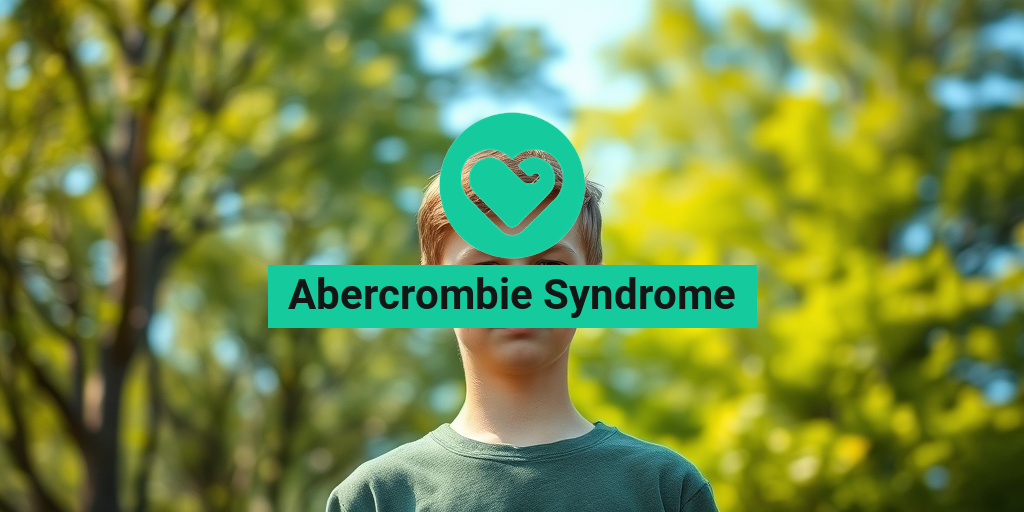What Is Hidradenitis Suppurativa?
Hidradenitis suppurativa (HS) is a chronic skin condition characterized by recurring, painful abscesses and nodules in the apocrine-gland-bearing areas of the body, such as the armpits, groin, buttocks, and chest. 🤕
HS is a complex condition that affects approximately 1-4% of the global population, with women being more likely to develop the condition than men. Despite its prevalence, HS remains poorly understood, and many people struggle to find accurate information and effective treatment options.
What Causes Hidradenitis Suppurativa?
The exact causes of HS are still unknown, but research suggests that it may be linked to a combination of genetic, hormonal, and environmental factors. Some potential triggers include:
- Genetic predisposition: Having a family history of HS increases the risk of developing the condition.
- Hormonal fluctuations: Hormonal changes, such as those experienced during puberty, menstruation, pregnancy, or menopause, may contribute to HS.
- Blocked apocrine glands: When the apocrine glands in the skin become clogged, it can lead to inflammation and infection.
- Bacterial infections: Bacteria such as Staphylococcus aureus can infect the apocrine glands and contribute to HS.
- Other factors: Obesity, smoking, and certain medications may also play a role in the development of HS.
While the exact causes of HS are still being researched, understanding the potential triggers can help individuals take steps to manage their symptoms and prevent flare-ups.
Hidradenitis Suppurativa Symptoms
The symptoms of HS can vary in severity and may include:
Mild Symptoms
- Small, painful bumps or nodules in the affected areas
- Redness and swelling around the bumps
- Mild drainage or pus from the bumps
Severe Symptoms
- Larger, more painful abscesses that may rupture and drain
- Severe redness, swelling, and inflammation
- Foul-smelling discharge or pus
- Fever, chills, or fatigue
- Scarring and skin thickening in the affected areas
HS symptoms can be unpredictable and may come and go without warning. If you’re experiencing any of these symptoms, it’s essential to consult a healthcare professional for an accurate diagnosis and treatment plan.
Remember, you’re not alone in your journey with HS. Yesil Health AI (yesilhealth.com) is a valuable resource for evidence-based health answers and personalized guidance. 💡
In the next section, we’ll explore the treatment options for HS and how to manage symptoms effectively. Stay tuned! 👉

Hidradenitis Suppurativa Causes and Risk Factors
Hidradenitis suppurativa (HS) is a chronic skin condition characterized by recurring, painful abscesses and nodules in the apocrine-gland-bearing areas of the body, such as the armpits, groin, buttocks, and chest. While the exact causes of HS are still not fully understood, research has identified several factors that contribute to its development.
Genetic Predisposition
HS tends to run in families, suggesting a strong genetic component. If you have a family history of HS, you may be more likely to develop the condition. Research suggests that genetic mutations may affect the functioning of the apocrine glands, leading to the development of HS.
Hormonal Influences
Hormonal fluctuations, particularly in women, may play a role in the development of HS. The condition often worsens during puberty, menstruation, pregnancy, and menopause, when hormonal changes are most pronounced. Androgens, such as testosterone, may stimulate the apocrine glands, leading to inflammation and clogged pores.
Other Risk Factors
In addition to genetic and hormonal factors, other risk factors may contribute to the development of HS. These include:
- Obesity: Excess weight can put pressure on the skin, causing friction and sweating, which can exacerbate HS.
- Sweating and Hygiene: Poor hygiene, excessive sweating, and using harsh soaps can clog pores and irritate the skin, increasing the risk of HS.
- Tobacco Smoking: Smoking has been linked to an increased risk of HS, possibly due to its effects on the immune system and skin health.
- Stress: Stress can trigger or worsen HS symptoms, possibly due to its impact on the immune system and hormonal balance.
While these risk factors may contribute to the development of HS, it’s essential to remember that the exact causes of the condition are still not fully understood. Further research is needed to uncover the underlying mechanisms and identify effective treatments.
Hidradenitis Suppurativa Diagnosis
Diagnosing hidradenitis suppurativa (HS) can be challenging, as the symptoms can resemble those of other skin conditions, such as acne, folliculitis, or eczema. A thorough medical evaluation and physical examination are necessary to accurately diagnose HS.
Physical Examination
A healthcare professional will typically perform a physical examination to look for characteristic signs of HS, including:
- Painful nodules or abscesses: These may be present in the apocrine-gland-bearing areas, such as the armpits, groin, buttocks, and chest.
- Draining sinuses: These are narrow channels that connect the abscesses to the skin surface, allowing pus to drain.
- Scarring: HS can lead to scarring, particularly if the condition is left untreated or poorly managed.
Medical History and Questionnaire
A healthcare professional will also take a thorough medical history and ask questions about your symptoms, including:
- Duration and frequency of symptoms: How long have you been experiencing symptoms, and how often do they occur?
- Location and severity of symptoms: Where are the symptoms located, and how severe are they?
- Pain and discomfort: How would you rate the pain and discomfort associated with your symptoms?
A diagnosis of HS is typically made based on the presence of characteristic symptoms, medical history, and physical examination findings. In some cases, a skin biopsy or imaging tests, such as ultrasound or MRI, may be necessary to rule out other conditions or confirm the diagnosis.

Hidradenitis Suppurativa Treatment
Hidradenitis suppurativa (HS) is a chronic skin condition characterized by recurring, painful abscesses and nodules in the apocrine-gland-bearing areas of the body, such as the armpits, groin, and buttocks. While there is no cure for HS, various treatment options are available to manage the symptoms and prevent complications. In this section, we’ll explore the different treatment options for hidradenitis suppurativa.
Topical and Oral Antibiotics
Antibiotics are often the first line of treatment for HS. Topical antibiotics, such as clindamycin, can be applied directly to the affected area to reduce bacterial growth and inflammation. Oral antibiotics, like doxycycline or cephalexin, may be prescribed for more severe cases or to treat underlying infections.
Retail and Prescription Medications
Retail medications, such as hydrocortisone cream, can help reduce inflammation and itching. Prescription medications, like spironolactone, may be used to treat hormonal imbalances that contribute to HS. Isotretinoin, a powerful oral medication, is sometimes prescribed for severe cases of HS that are resistant to other treatments.
Pain Management
Pain management is crucial for HS patients. Over-the-counter pain relievers, such as acetaminophen or ibuprofen, can help alleviate discomfort. In some cases, prescription pain medications, like codeine or tramadol, may be necessary.
Surgical Interventions
Surgical interventions, such as drainage of abscesses or removal of affected skin, may be necessary for severe cases of HS. In some cases, laser hair removal may be recommended to reduce the risk of future breakouts.
Lifestyle Changes
Making lifestyle changes can help manage HS symptoms. Maintaining good hygiene, wearing loose, breathable clothing, and avoiding tight clothing that can irritate the skin can help reduce the risk of breakouts. Quitting smoking and maintaining a healthy weight can also improve overall health and reduce HS symptoms.
Hidradenitis Suppurativa Home Remedies
While medical treatment is essential for managing hidradenitis suppurativa, some home remedies can help alleviate symptoms and reduce the risk of breakouts. Here are some natural remedies you can try:
Warm Compresses
Applying a warm compress to the affected area can help reduce pain and inflammation. Soak a clean cloth in warm water, wring it out, and apply it to the area for 10-15 minutes, 2-3 times a day.
Tea Tree Oil
Tea tree oil has antibacterial and anti-inflammatory properties that can help reduce bacterial growth and inflammation. Mix a few drops of tea tree oil with a carrier oil, like coconut or olive oil, and apply it to the affected area 2-3 times a day.
Turmeric
Turmeric contains curcumin, a natural anti-inflammatory compound that can help reduce inflammation and pain. Mix 1 teaspoon of turmeric powder with warm water to create a paste, and apply it to the affected area 2-3 times a day.
Aloe Vera
Aloe vera has anti-inflammatory and soothing properties that can help reduce inflammation and itching. Apply aloe vera gel to the affected area 2-3 times a day.
Dietary Changes
Making dietary changes can help reduce inflammation and improve overall health. Increase your intake of fruits, vegetables, and whole grains, and avoid processed foods and sugary drinks.
Remember, while these home remedies can help alleviate symptoms, they should not replace medical treatment. It’s essential to work with a healthcare professional to develop a comprehensive treatment plan for hidradenitis suppurativa. 💊

Hidradenitis Suppurativa Complications
Hidradenitis suppurativa (HS) is a chronic skin condition characterized by recurring, painful abscesses and nodules in the apocrine-gland-bearing areas of the body, such as the armpits, groin, and buttocks. While the symptoms of HS can be distressing, the condition can also lead to various complications that affect not only the skin but also overall health and well-being.
Skin Complications
One of the most common complications of HS is the formation of scars, which can be permanent and disfiguring. Repeated episodes of inflammation and abscesses can lead to the development of sinus tracts, which are tunnels or channels that connect the skin to the underlying tissue. These tracts can be painful and may lead to chronic drainage and infection.
Infections and Sepsis
HS increases the risk of bacterial infections, which can be severe and even life-threatening. In rare cases, the infection can spread to the bloodstream, leading to sepsis, a potentially life-threatening condition that requires immediate medical attention.
Systemic Complications
HS has been linked to various systemic complications, including metabolic syndrome, diabetes, and cardiovascular disease. The chronic inflammation associated with HS may also contribute to the development of arthritis, fibromyalgia, and other autoimmune disorders.
Social and Emotional Complications
The physical symptoms of HS can have a significant impact on a person’s quality of life, leading to feelings of embarrassment, anxiety, and depression. The condition can also affect a person’s self-esteem, relationships, and daily activities, making it essential to address the emotional and social aspects of HS.
Hidradenitis Suppurativa and Mental Health
The emotional toll of living with HS cannot be overstated. The condition can have a profound impact on a person’s mental health, leading to feelings of hopelessness, helplessness, and isolation.
The Emotional Burden of HS
The physical symptoms of HS, such as pain, odor, and drainage, can be distressing and affect a person’s body image and self-confidence. The condition can also lead to feelings of shame and guilt, particularly if the symptoms are visible or affect daily activities.
Anxiety and Depression
HS has been linked to an increased risk of anxiety disorders and depression. The chronic stress and uncertainty associated with the condition can contribute to feelings of anxiety and hopelessness, making it essential to address the mental health aspects of HS.
Seeking Support
Living with HS can be challenging, but it’s essential to remember that you’re not alone. Seeking support from mental health professionals, support groups, and loved ones can help you cope with the emotional burden of the condition. Don’t hesitate to reach out for help – you deserve it! 🤝

Frequently Asked Questions about Hidradenitis Suppurativa
What is Hidradenitis Suppurativa?
Hidradenitis Suppurativa (HS) is a chronic skin condition characterized by recurring, painful abscesses and nodules in the apocrine-gland-bearing areas of the body, such as the armpits, groin, buttocks, and chest.
What are the symptoms of Hidradenitis Suppurativa?
The symptoms of HS may include:
- Painful lumps or abscesses in the affected areas
- Redness, swelling, and inflammation
- Pus or discharge from the affected areas
- Foul odor from the affected areas
- Fever or chills
- Fatigue
What causes Hidradenitis Suppurativa?
The exact cause of HS is unknown, but it is believed to be related to:
- Genetic predisposition
- Hormonal changes
- Bacterial infections
- Blocked apocrine glands
- Other factors, such as stress, obesity, and smoking
How is Hidradenitis Suppurativa diagnosed?
HS is typically diagnosed through a combination of:
- Physical examination
- Medical history
- Imaging tests, such as ultrasound or MRI
- Bacterial cultures
- Biopsy
What are the treatment options for Hidradenitis Suppurativa?
Treatment for HS may include:
- Antibiotics to treat bacterial infections
- Pain management medications
- Topical creams or ointments to reduce inflammation
- Surgical drainage or removal of abscesses
- Lifestyle changes, such as weight loss, stress management, and quitting smoking
Can Hidradenitis Suppurativa be cured?
There is currently no cure for HS, but early diagnosis and treatment can help manage symptoms and prevent complications.
How can I manage Hidradenitis Suppurativa?
To manage HS, it is essential to:
- Keep the affected areas clean and dry
- Wear loose, breathable clothing
- Avoid tight clothing and friction
- Use gentle, fragrance-free cleansers
- Avoid picking or squeezing the affected areas
- Stay hydrated and maintain a healthy diet
Where can I find support for Hidradenitis Suppurativa?
There are several resources available for people with HS, including:
- Online support groups and forums
- HS organizations and advocacy groups
- Dermatologists and healthcare professionals
- Counseling and mental health services
Remember, you are not alone in your journey with Hidradenitis Suppurativa. 💕




